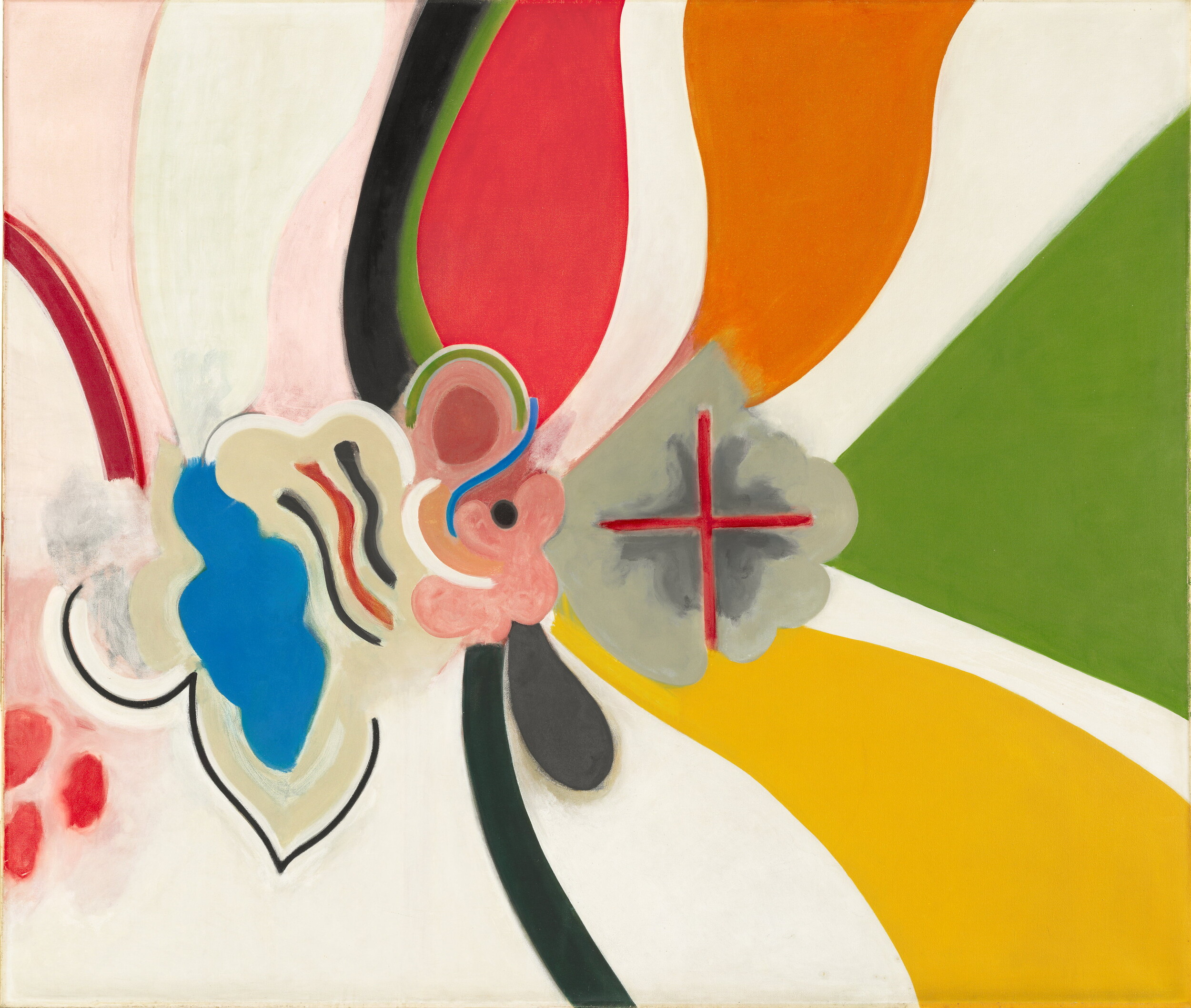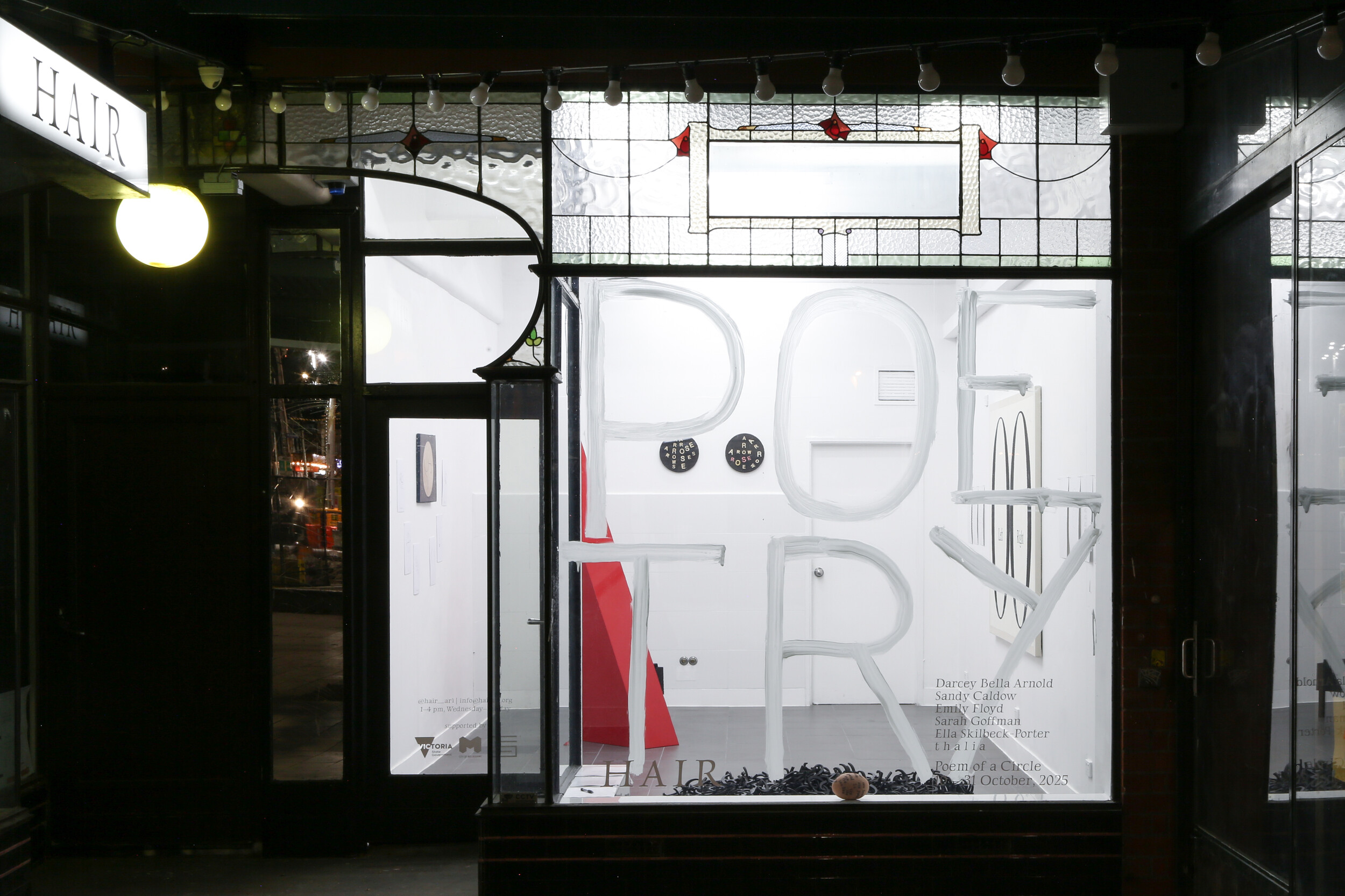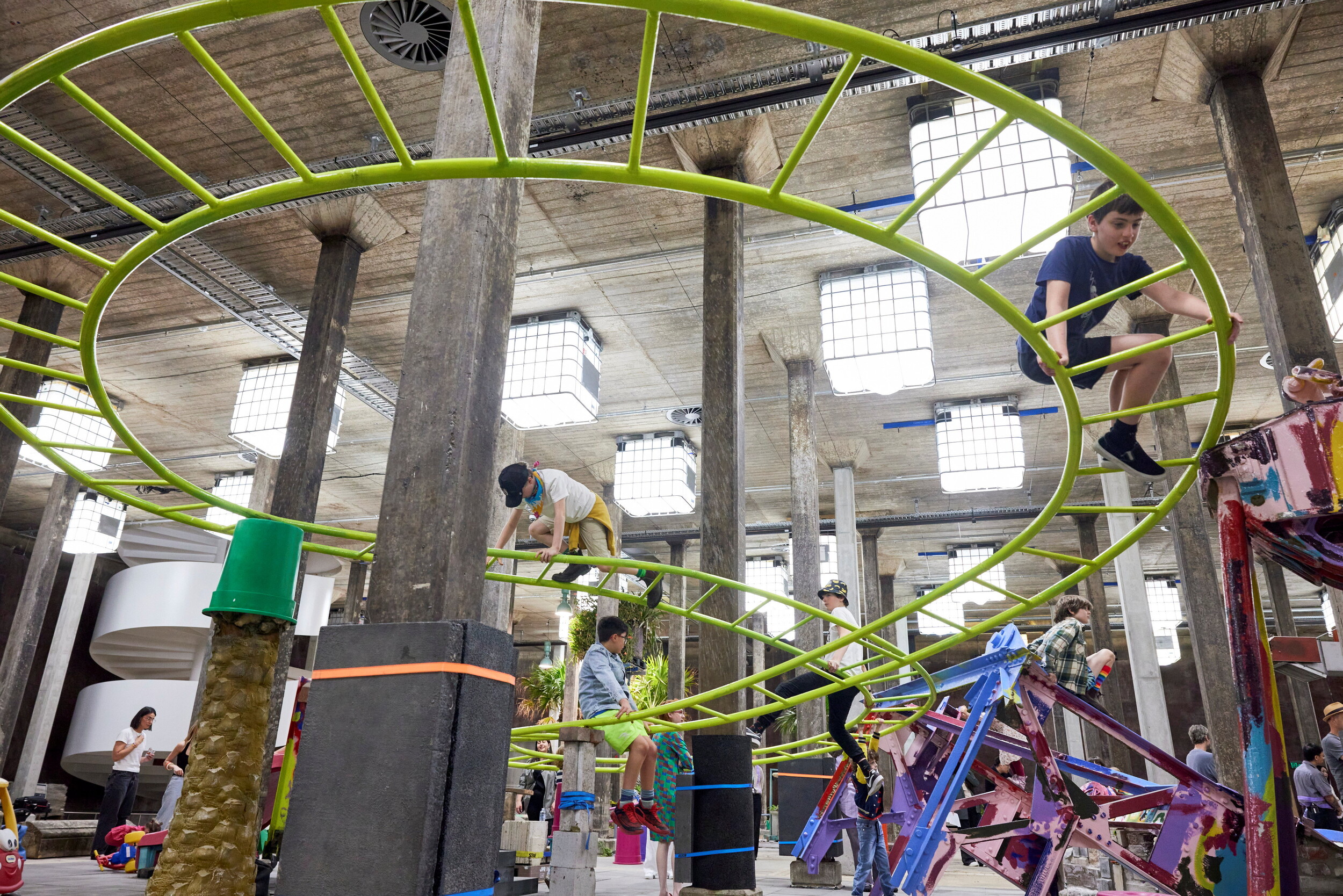Installation view of Each Apparition, Searches for an Eye, Ames Yavuz Sydney, 2025, photographed by Jessica Maurer
Each Apparition, Searches for an Eye
Sascha Cornell
In Each Apparition, Searches for an Eye, Stanislava Pinchuk constructs a world of images shaped by flicker and withheld presence, where the aftershocks of war settle into fugitive traces and the act of seeing becomes fraught. The Ukrainian-Australian artist—who was appointed Australia’s Official War Artist by the Australian War Memorial in 2023—presents a quiet, devastating meditation on war, visibility, and the politics of witnessing. Developed after her deployment to observe military training for Ukraine’s Armed Forces, Pinchuk’s exhibition resists reportage and instead offers a spectral archive that hovers between presence and absence, evidence and erasure.
This is not the first time Pinchuk has engaged with the visual and conceptual legacies of conflict. Her earlier projects translated data from war zones and refugee routes into delicate mappings, using topographic lines (Surface to Air, 2015), lace meshes (Borders, 2018), or tattooing (Immigration Granulation, 2019). But Each Apparition, Searches for an Eye marks a shift into a darker, more elusive register. The photographs are documents, yes—but also rituals. As the gallery’s curatorial text puts it, they exist “between document and spectre, concealment and evidence.”
Installed at Ames Yavuz’s Sydney gallery, the work consists of one hundred pigment prints mounted on brushed stainless steel plates, each the size of a passport photograph. The plates are displayed against a heavy green velvet curtain that lines the full perimeter of the gallery. The miniature scale invites viewers to walk the length of the space, frame by frame, as if reading a visual poem about erasure: rhythmic, fragmented, whispering. Intimate scale, coupled with the material decisions—the curtain, the steel— evoke both the theatrical and the forensic. There is something devotional in the alignment of the images, as if each were a reliquary. Yet there is also something ghostly, almost fugitive. The small prints demand that viewer moves slowly, intimately—only to be met by obscured forms.
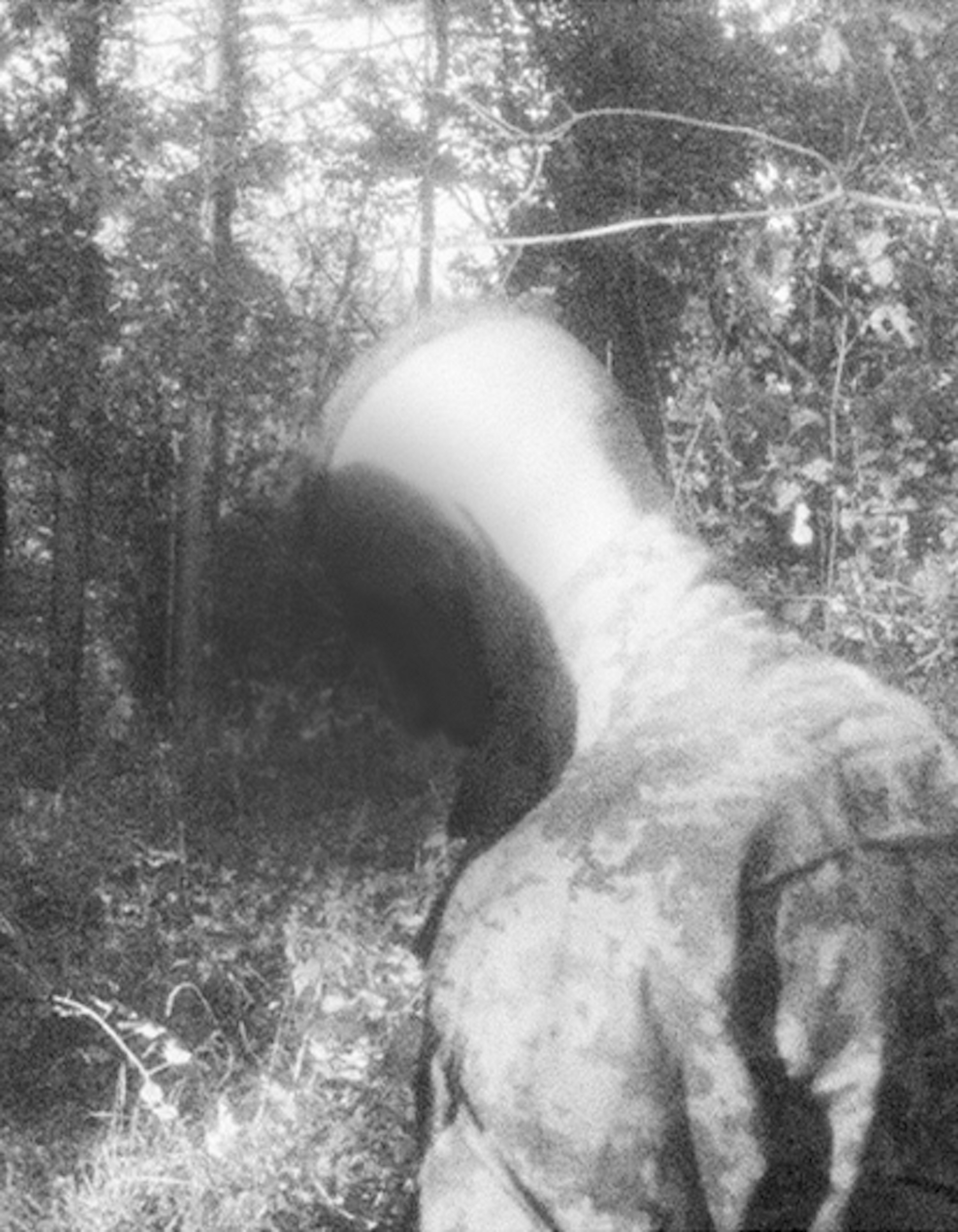
Stanislava Pinchuk, A_12, 2025, Perspex-mounted pigment print, erasure and stainless steel, 26 x 20 x 6 cm (frame size), 4.5 x 3.5 cm (photograph size)
Pinchuk’s title, Each Apparition, Searches for an Eye, points to this unstable visibility. The analogue photographs depict soldiers and military landscapes from her time in Ukraine, yet the identities of those pictured are concealed. Faces are turned away, covered, or obscured by the artist’s physical manipulation of the negatives; images are fogged, overexposed, or layered with flares of light. The effect recalls daguerreotypes in their grainy, ethereal quality or the silvery distorted tradition of spirit photography. The use of concealment—necessitated by the threat of enemy facial recognition—becomes Each Apparition, Searches for an Eye’s guiding aesthetic and political principle. Photographs that withhold recognition and certainty; and replace it with a spectral intimacy.
One image, titled E_70, captures a fogged windowpane etched with the Tryzub, Ukraine’s national trident emblem, frosted in what may be the residual breath or body heat of an unseen soldier’s presence. In H_98, a fragment of a soldier’s face is only visible through the mirrored palette of camouflage paints he holds. Another image, H_94, shows what might be a figure hidden behind wildflowers, or perhaps nothing at all. A rippled reflection in water bears the only discernible “eye” in D_63, while the back of a beanie in C_33 is stitched with cartoon cat eyes, an uncanny displacement of gaze. Despite the absence of any grand declarations here, we might consider the concealment of subjects’ identities as the grand gesture.
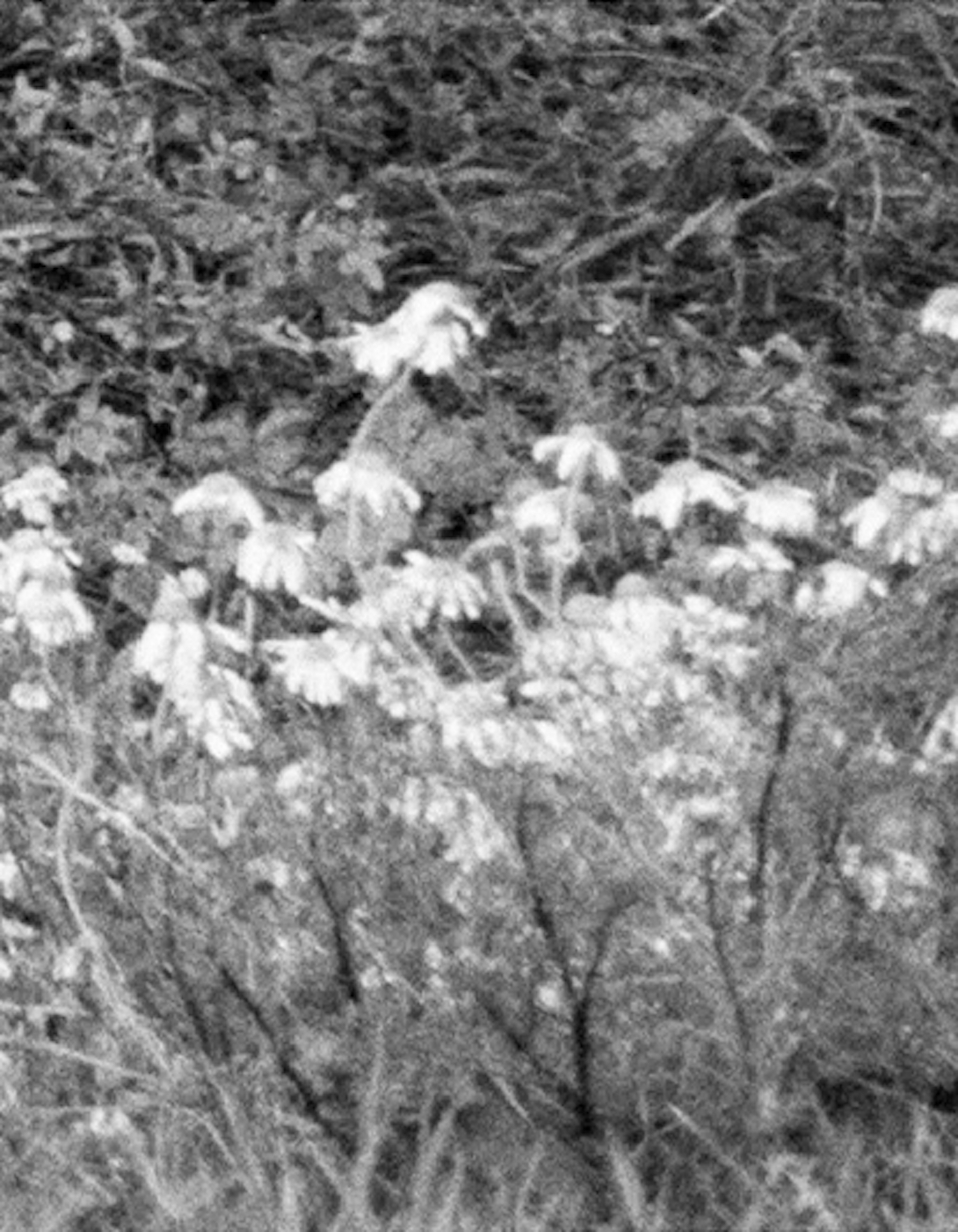
Stanislava Pinchuk, H_95, 2025, Perspex-mounted pigment print, erasure and stainless steel, 26 x 20 x 6 cm (frame size), 4.5 x 3.5 cm (photograph size)
The formal materials of the installation deepen its affective atmosphere. The velvet curtain softens and insulates, evoking associations with privacy, concealment, and theatrical staging. It recalls the choreographed press conferences typical of authoritarian regimes—where heavy drapery, controlled lighting, and tightly managed optics work together to project an illusion of order. The curtain’s green hue, a colour commonly found in military interiors and nationalistic iconography, further saturates the space with a sense of unease and the spectacle of control. The stainless steel mounts evoke military armour, with their positioning at chest level inviting a relational encounter, as if standing face to face with the soldier subjects. Meanwhile, the title format, letter_number, echoes that of a taxonomised specimen—dislocating the images from any biography or linear storytelling. In lieu of the explicit, Pinchuk’s transmission is haptic, inducing the claustrophobic and ambiguous texture of war.
Pinchuk’s approach might be understood as a visual ethics of restraint. If Susan Sontag once wrote that “photographs objectify: they turn an event or a person into something that can be possessed,” Pinchuk subverts that logic. Her works evade the eye’s dominance, asking us to feel, uncertainly, what remains unseen. Rather than reproduce the visual grammar of war photography—impact, trauma, spectacle—she asks: what does it mean to see without possessing? To look without violating? Her work is in keeping with a lineage of post-Soviet cultural forms theorised by Ukrainian literary critic Tamara Hundorova which she argues encode trauma not through direct testimony, but via symbolic residues. Photographs in this context extend the notion of record, becoming affective indexes of the unseen and the felt. Unlike the oft violent imaginary of photojournalism, Pinchuk presents a body of work that resists an extractive gaze.
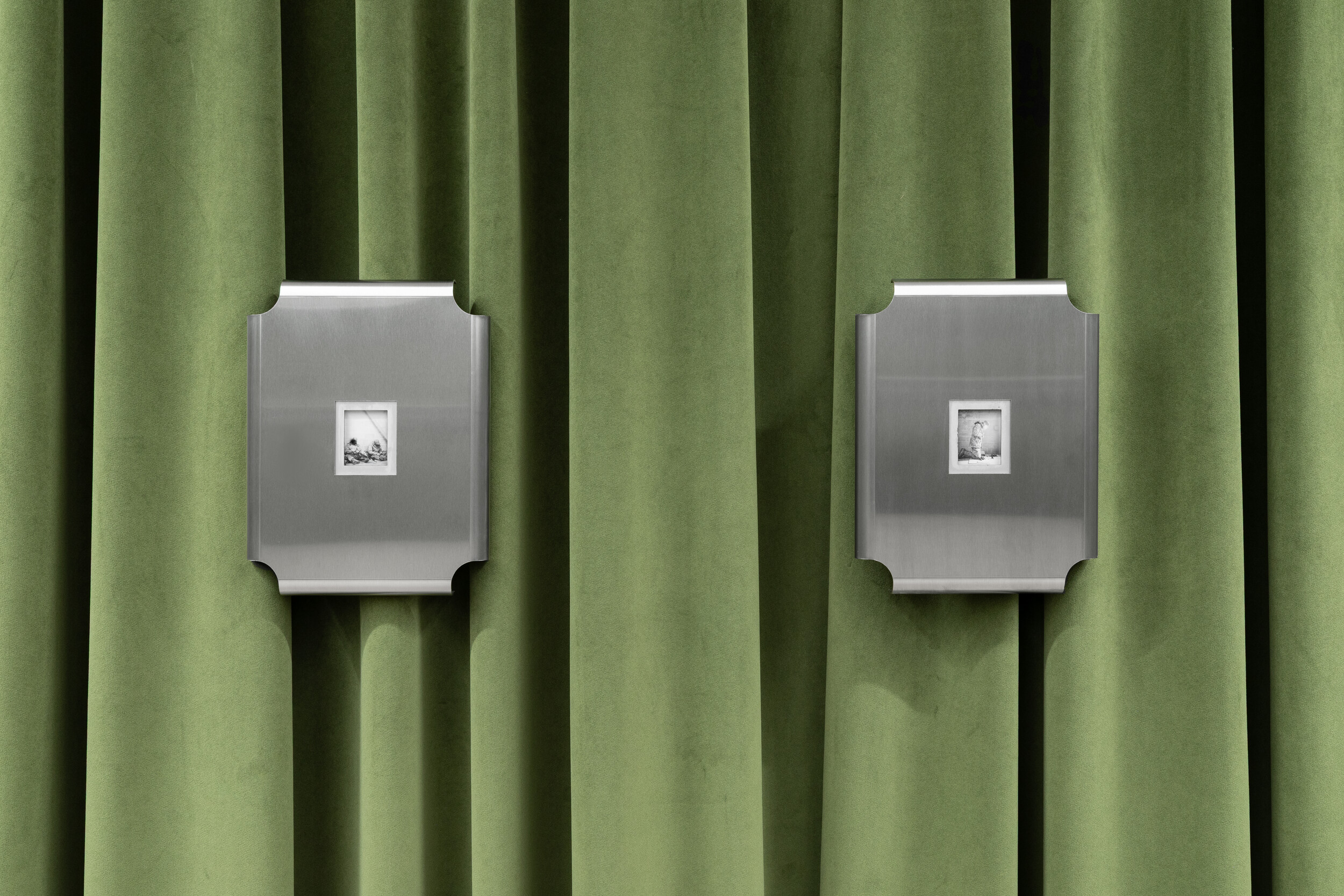
Installation view of Each Apparition, Searches for an Eye, Ames Yavuz Sydney, 2025, photographed by Jessica Maurer
As a Ukrainian-Australian, Pinchuk’s work resonates sharply with me. These photographs echo diasporic disjuncture: the diasporic entity experiences their place of origin through screens, through fragments and half-light. Diaspora identity can feel like fracture—delayed, distorted, squinting through grain and static. Pinchuk’s photographs mirror this dislocation: they are affectively charged, yet materially obstructed. Reflecting the tensions of negotiating proximity and distance, this work is both intimate and uneasy. What does it mean to witness a war you’re not in, but which is in you? The intimacy they offer is an uneasy one—ambivalent and resisting closure.
Indeed, to witness this exhibition is to be implicated. These photographs are not images for spectatorship but for reckoning. Following cultural theorist Ariella Azoulay’s concept of the photograph as a civil contract, we might say that Pinchuk invites a relational, rather than observational, form of viewing. It urges us to remember without consuming, to see without mastering. In a world saturated with images of suffering, Pinchuk offers a different visual language: one of elusive intimacy, withholding, and reverent attention. To look is to enter relation, but in Each Apparition, Searches for an Eye that relation is ethically charged. The images do not look back; they reverberate. They refuse to give themselves over and instead implicate the viewer, asking: What does it mean to look from exile and, consequently, from safety?
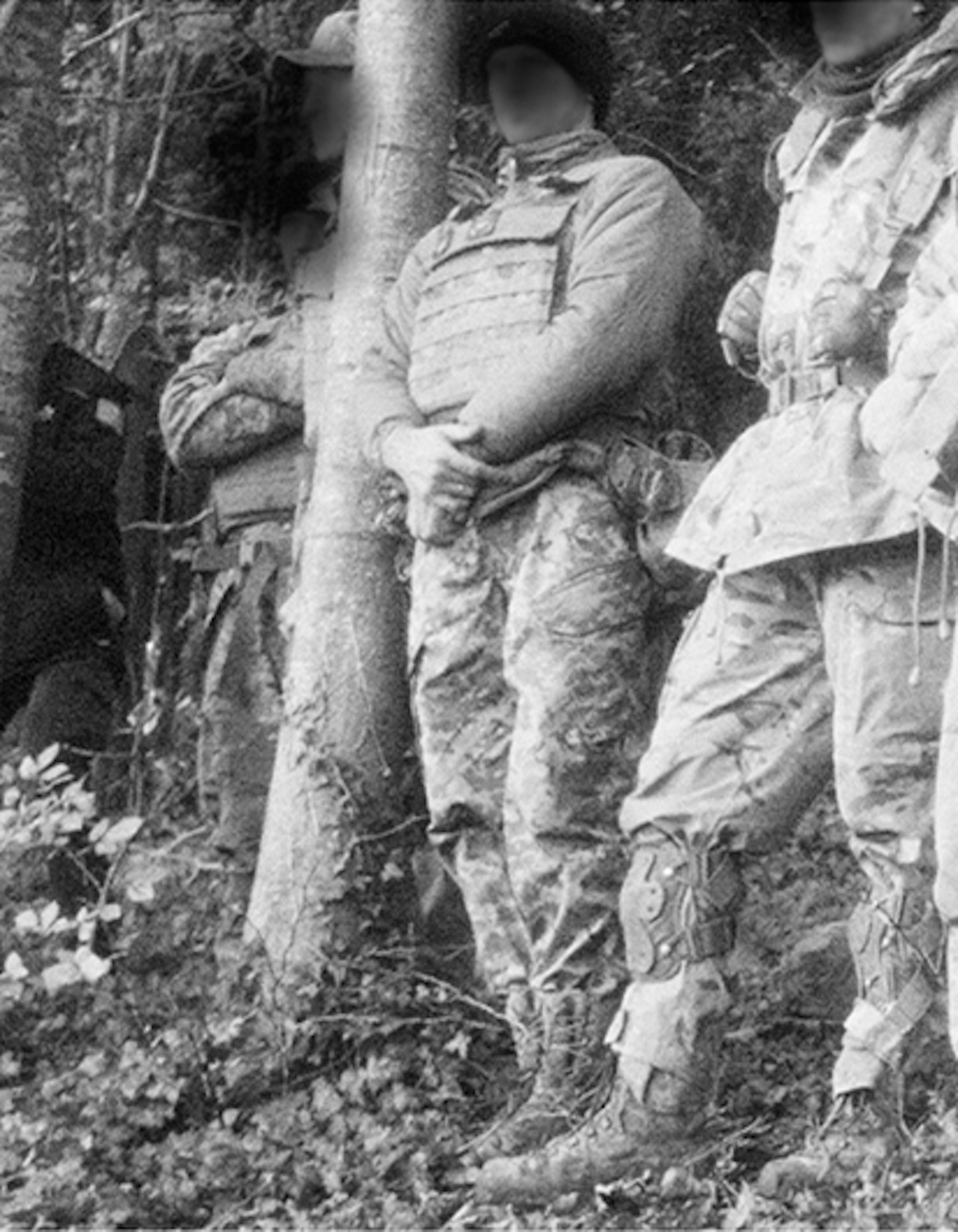
Stanislava Pinchuk, A_01, 2025, Perspex-mounted pigment print, erasure and stainless steel, 26 x 20 x 6 cm (frame size), 4.5 x 3.5 cm (photograph size)
The politics of the fragment is central to Pinchuk’s work. In addition to necessarily protecting the identities of those pictures, the fragment acts as a deliberate form of resistance to totalising narratives and the reductive demands of representational sovereignty. These fragments—partial images and fleeting gestures—function as interruptions in the visual economy of war, refusing to be fully legible or possessed. The war in Ukraine is not just a military war; it is a long imperial project, reasserted through cultural, linguistic and territorial violence. The obliteration of cities, and the erasure of language and history, is part of this logic. This is war at the edge of representation: ruptured, opaque and ghostly. Rather than illustrating these facts, Pinchuk approaches them obliquely—mapping war’s psychic toll through gestures of refusal and restraint. Such refusal is political. Under Russia’s colonising aggression, Ukrainian memory has been appropriated and silenced. Pinchuk’s spectral aesthetic, then, enacts a form of resistance that subverts declarative imagery, channelling Ukrainian defiance through atmospheric and unresolved forms. The refusal to present clear subjects becomes a visual stance of sovereignty, one that rejects the Russian logic of surveillance. By withholding clarity, she denies the extractive gaze any satisfaction. The work is inward and watchful—insisting on presence even amid erasure. There is freedom, too, in the spectral: to remain ungraspable, uncolonised by the gaze. Each Apparition, Searches for an Eye asserts that the Ukrainian experience cannot be easily seen, known, or possessed.
Sascha Cornell is a Ukrainian Australian researcher, curator and writer on unceded Gadigal Land. They are a Casual Academic at UNSW Art & Design and hold degrees in Art Theory and Public Policy.
